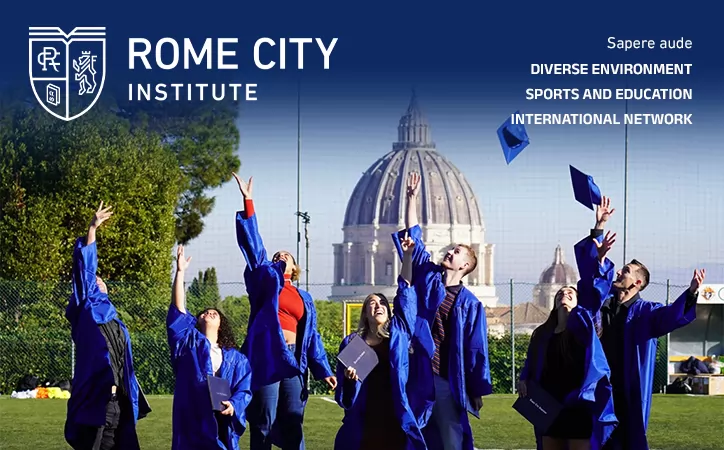Rome's Protestant cemetery gets a shake-up.
An oasis of peace amid the havoc of Rome, one of the most enchanting corners of the city, today holds the unenviable award of being classified by the UNESCO World Monuments Fund as one of the 100 most endangered monuments on earth. A plan is now under way to salvage it amid cries of pain from those it most directly affects.
At stake is the haunting Protestant cemetery in Rome (now officially known as the non-Catholic cemetery), ensconced in silence behind high walls cheek-by-jowl with the Porta S. Paolo gateway into the city. For some 250 years, it has been the favourite resting-place of foreigners in Rome, among them the English Romantic poets John Keats and Percy Bysshe Shelley and the Danish poet Carsten Hauch.
The first mention of the cemetery dates back to 1784 when, under orders of the pope, non-Catholics could only be buried at night in non-consecrated ground, and it was only in 1817 that the Roman Catholic Church gave permission for it to be enclosed behind walls. Today the so-called the Protestant cemetery embraces some 2,500 graves, most belonging to now quite forgotten souls. They include a sexton of the church of the Russian Embassy, who died in 1913, a Hungarian couple called Karoly and Ann Neuhauser, who expired nine years later, and Leonard Eric Gosling (1972-1921) from Coventry, once an airman with the 617 RAF squadron. There is also Clara Woolson Benedict, who wrote: This cemetery is the only joyous cemetery I know of. Here the flowers always bloom, the birds always sing.
But for how long? Now, the whole place is claimed to be on the verge of tumbling into ruin. Why? It is being damaged at an alarming rate by air pollution eating away at the gravestones and the scattered monuments we have here, by rot in the plants and shrubberies and by the pushing up of roots, not to mention subsidence. Weve urgently got to discover whether the sinking is a thing of the past or is still on-going. The explanation came from Catherine Payling, curator of the Keats Shelley Museum in Piazza di Spagna and newly-appointed treasurer of the cemetery. The further problem is that only about 600 relatives of those buried here contribute to the upkeep of the graves. The others have disappeared, so we simply havent got the money even for ordinary maintenance, let alone for the emergency we now face.
What kind of money was needed? Well, take Highgate cemetery in London. It was abandoned in the 1970s but then there was a rescue operation. It does get through about 250,000 a year, but it shows it can be done, said Payling.
We were standing on the graveyards springy lawn on the balmy spring evening that witnessed the start of a similar undertaking, the inauguration of a special fund-raising Friends Association, introduced by Romes councillor for culture, Gianni Borgna. Lilliputionised against the towering pyramidal tomb behind him of the Roman tribune Caius Cestius (d. 12 BC), he grew lyrical over The Ashes of Gramsci, a poem by the murdered film-maker Pier Paolo Pasolini inspired by the tomb in the cemetery of the founder of the Italian communist party, Antonio Gramsci. Borgna thereupon promised the city councils constant commitment to help find new ways of financing and thus saving this jewel of Rome. Among them, he proposed inserting the cemetery into Romes tourist circuit, for example by adding it to the itinerary of the city councils own museums, even though the graveyard does not belong to it.
At this point, looks of consternation appeared on the faces of the relatives of the dead, who then grew more disturbed to hear Flemming Stender, the Danish ambassador and chairman of the cemeterys governing committee of 14 foreign ambassadors, proclaim: Time is taking its toll on the cemetery. Its salvation will be very, very costly. It has got to become a must for all tourists to Rome.
Those whose dead were around us looked unhappier still when it was then announced triumphantly that big contributions had come in already, including a very generous one from the noted jeweller Nicola Bulgari.
Afterwards, privately voicing the concern of the relatives was the Reverend Sara MacVane, president of Churches Together in Rome, a group of all the English-speaking churches in Rome, whose 27-year-old son lies in the cemetery. I got nervous listening to them talk about tourists. Do you really think we need bus-loads of them, with women in slacks and chewing gum, trampling all over the place? Many of us come here for spiritual reasons, to meditate in silence, and the most important foreign churches in Rome actually hold services here. As well as that, we need more clarity about whats going on, fiscal clarity included. Are we getting taken over or something?
The fee-paying (350 a year) relatives were apparently further upset by their seeming exclusion so far from a new advisory committee of experts formed to recommend salvage measures for the site. However, the cemeterys lively manager, Minny Augeri, said the committee was still not complete, suggesting there could yet be free space on it.
Today the cemetery is officially known as the non-Catholic cemetery, not only because of the burial of non-Catholic Christians behind its walls but also of Jews, a handful of Muslims as well as non-believers in any religious faith. But another change now seemed certain: it could soon no longer be the hidden treasure everybody that evening acknowledged it was.
The Non-Catholic Cemetery in Rome,
Via Caio Cestio 6, 00153 Roma, tel. 065741900. www.protestantcemetery. it.


















